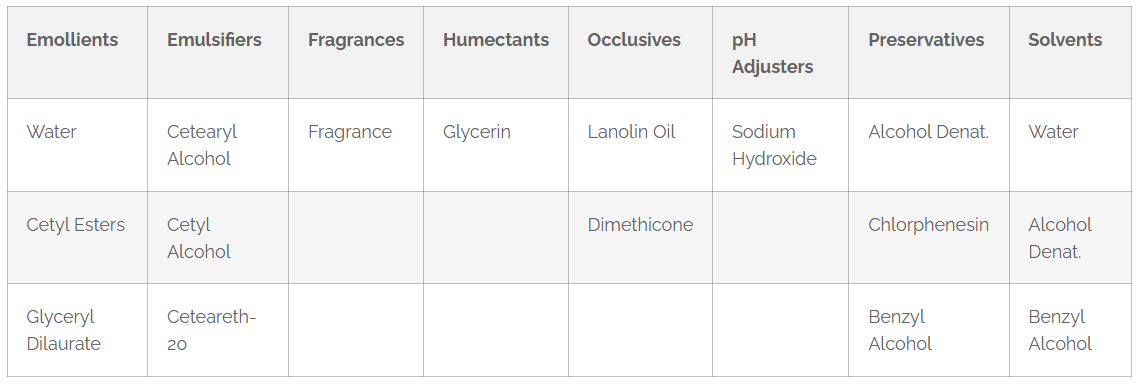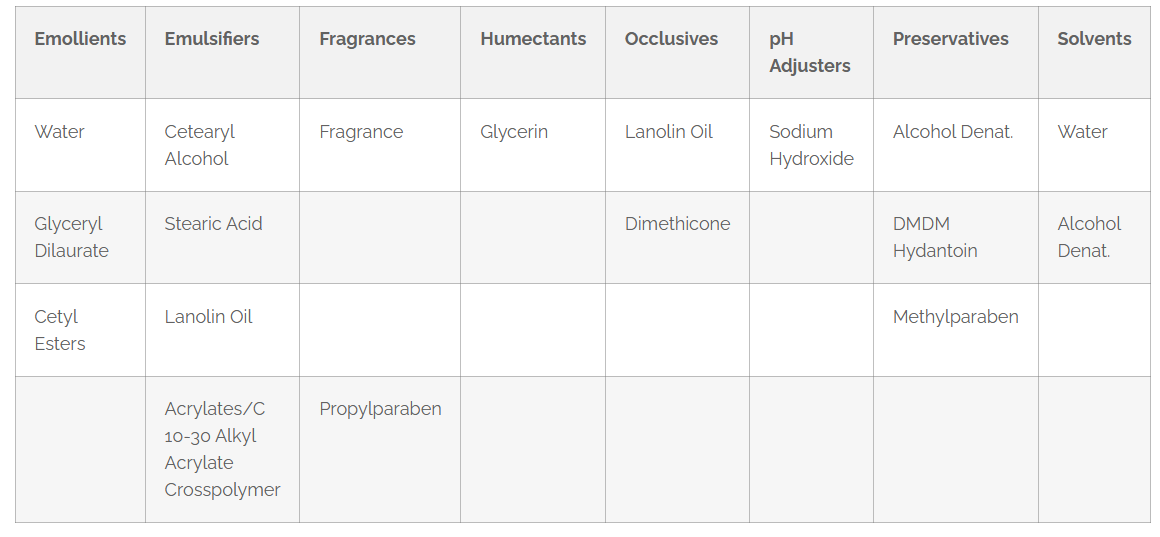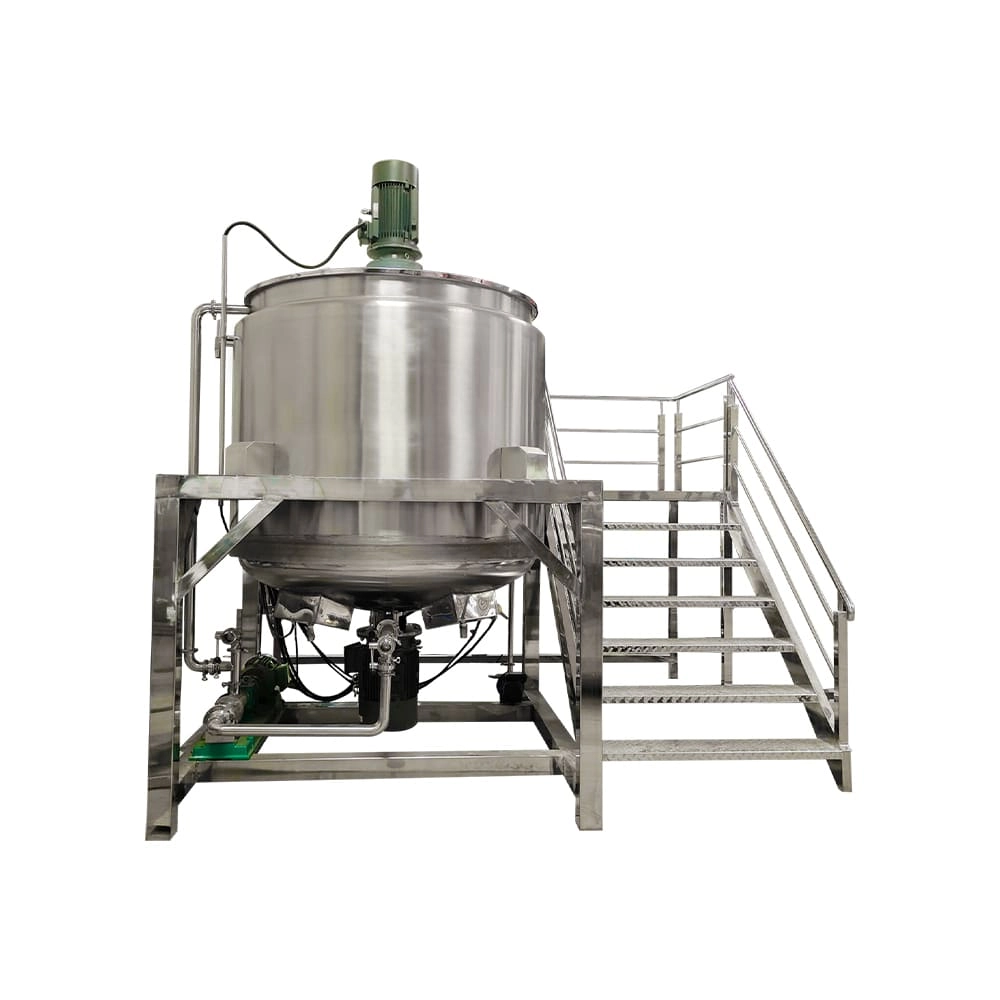How Lotion Is Made: Step-by-Step Guide for Home and Factory Production
Discover how YUANYANG’s Cosmetic Mixer and Lifting Homogenizer Mixer streamline lotion production in our step-by-step guide, detailing both home and factory methods. Learn efficient, quality techniques to make smooth, effective lotions with our expert equipment insights.
- Simple Lotion Making Formula
- Lotion Labels Real Ingredients
- Comparing the Ingredients of Lotion in Various Products
- Comparison of Two Lotions of the same scent
- Lotion One: Components and Their Role
- Lotion Two: Ingredients and Their Function
- A comparison of Lotions Sold as Skin Protection
- Lotion Three: Components and Their Role
- Lotion Four: Components and Their Role
- Alternatives to Water
- Emulsifying Wax Choices
- Other Customization Ingredients
- Significance of Preservatives
- Additive customization
- Lotion Manufacturing in a Factory: Industrial Perspective
- Mixers: Increasing the level of Lotion Production
- Selecting the Right Mixer
- For Batch Production: 200L Cosmetic Mixer
- For Flexible and Scalable Mixing: Lifting Homogenizer Mixer
- Why YUANYANG Mixers?
Simple Lotion Making Formula
The basic formula of making lotion at home or in a factory is:
70-80 percent Distilled Water
3-6% Emulsifier
3-5% Co-Emulsifier
Oils and Butters 8-23%
1% Preservative
Lotion Labels Real Ingredients
In the case of skincare, the path to learning the process of lotion production reveals an interesting world of ingredients that interact in harmony. There are eight main types of ingredients that are usually used in lotions and each has a purpose.
1. Emollients
Emollients like water, cetyl esters, glyceryl dilaurate, lanolin oil are important to keep the skin soft and smooth.
2. Emulsifiers
Emulsifiers are cetearyl alcohol, cetyl alcohol, ceteareth-20, lanolin oil, and acrylates/C10-30 alkyl acrylate crosspolymer, which keep the ingredients that have dissimilar properties mixed.
3. Fragrances
Fragrance is a mandatory ingredient, which gives that nice smell that lotions are usually known to have.
4. Humectants
Glycerin is a popular humectant that aids in drawing and locking moisture on the skin.
5. Occlusives
Lotions contain occlusive agents such as lanolin oil and dimethicone, which are oil-based products, to reduce evaporation of moisture.
6. PH Adjusters
Sodium hydroxide is used to control the PH of the product to make it safe to apply on the skin.
7. Preservatives
Alcohol denat., chlorphenesin, and benzyl alcohol are preservatives that prevent the growth of unwanted bacteria and fungi.
8. Solvents
The ingredients are dissolved and combined with the help of solvents such as water, alcohol denat., and benzyl alcohol.
Comparing the Ingredients of Lotion in Various Products
Comparison of Two Lotions of the same scent
So, let us take a closer look at the ingredient list of two lotions that are sold under the same fragrance and know what they are used for:
Lotion One: Components and Their Role

Lotion Two: Ingredients and Their Function

A comparison of Lotions Sold as Skin Protection
Now, passing to the lotions, which are sold as skin protectants, these products, which are over-the-counter drugs, contain certain active and inactive ingredients:
Lotion Three: Components and Their Role
Active Ingredient: dimethicone 1.2% (skin protectant ingredient)
Inactive Ingredients: water, glycerin, distearyldimonium chloride, petrolatum, isopropyl palmitate, cetyl alcohol, avena sativa (oat) kernel flour, benzyl alcohol, sodium chloride
Lotion Four: Components and Their Role
Active Ingredient: Dimethicone 1.3% (skin protectant ingredient)
Inactive Ingredients: water, glycerin, distearyldimonium chloride, petrolatum, isopropyl palmitate, cetyl alcohol, avena sativa (oat) kernel flour, benzyl alcohol, sodium chloride
Alternatives to Water
While distilled water is the most popular base, looking into botanical liquids such as aloe, jasmine essential water or cucumber essential water can give your homemade lotion a special something.
Emulsifying Wax Choices
It is important to select the appropriate emulsifying wax. They can be generic emulsifying wax, heavy-duty Polawax, plant-based Bio-Mulsion Wax and conditioning BTMS-50.
Other Customization Ingredients
Stearic acid, cetearyl alcohol and cetyl alcohol are used to thicken and stabilize emulsions.
The lotion is enriched with different oils such as sweet almond, olive, and shea butter that add different properties to the lotion.
Significance of Preservatives
Optiphen or Phenonip is a preservative that is crucial in inhibiting the growth of molds and bacteria in homemade lotions.
Additive customization
You can customize your lotion by adding extracts, glycerin, honeyquat and others.
Lotion Manufacturing in a Factory: Industrial Perspective
The process of making lotions is a highly technical process. Everything, including the acquisition of ingredients and filling the tubes, is a part of the quality of the final product.
Cosmetic creams and lotions may be oil-in-water or water-in-oil emulsions, and contain emollients, lubricants, emulsifying agents, thickeners, perfume, color, and preservatives.
On the industrial front, the process of manufacturing cosmetic creams and lotions is a very painstaking one. So what are the main points?
1. Formulation and Recipe Development:
Ingredients Selection: The formulators choose a blend of emollients, emulsifiers, humectants, occlusives, fragrances, pH adjusters, preservatives, and solvents depending on the attributes of the product required.
Customization: The formulation can be customized according to the type of product (e.g. moisturizing, anti-aging or sunblock lotions) and provide specific skin benefits.
2. Mixing and Weighing:
Precision Weighing: Weighing of the ingredients precisely is essential in consistency. Sophisticated weighing machines guarantee the correct amounts.
High-Speed Mixing: High shear mixers or homogenizers mix ingredients to create a stable and homogenous emulsion.
3. Heating and Cooling:
Emulsification: Heating will help in melting solid ingredients, and enhance emulsification. Cooling is then done to stabilize the emulsion and get the desired texture.
Temperature Control: Temperature control is crucial to avoid degradation of ingredients and to guarantee the quality of the products.
4. Introduction of Active Ingredients:
Specialized Additions: In case the lotion has active components such as vitamins or botanical extracts, they are added at certain points to maintain their effectiveness.
Homogeneous Distribution: Methods like microfluidization or extra mixing steps guarantee the homogeneous distribution of active components.
5. pH Adjustment:
pH control: Sodium hydroxide or citric acid is added to control and maintain the pH of the lotion within the range of pH that is compatible with the skin.
6. Quality Control and Testing:
Viscosity Testing: Rheometers are used to check the viscosity of the lotion to make sure that it has the required consistency.
pH Testing: Periodic pH tests ensure that the lotion is within the given pH range.
Microbial Testing: Testing of microbial contamination is done rigorously to make sure that the products are safe.
Stability Testing: Stability testing is done on products to determine the shelf life of the product under different conditions.
7. Filling and Packing:
Automated Filling: The lotion is filled accurately in containers with the help of automated filling machines and the wastage is minimal.
Aseptic Packaging: The packaging materials and processes ensure the sterility of the product and avoid contamination.
8. Labeling and Batch Coding:
Regulatory Compliance: Labels contain ingredients, usage directions and any necessary regulatory information.
Batch Coding: A unique code is assigned to each batch of products to trace and to control their quality.
9. Final Inspection:
Visual Inspection: A visual check is done on the finished products to ascertain that the products are of good quality.
Packaging Integrity: Seals, caps, and packaging materials are checked in terms of integrity.
Mixers: Increasing the level of Lotion Production
YANGYANG's Mixers are critical in solving issues in the production of lotions. Their accuracy in mixing helps in the distribution of ingredients uniformly thus producing lotions of high quality.
Stage 1: Precision Mixing with Yuanyang Mixers
YANGYANG's Mixers have a high-speed rotation and strong suction, which makes them evenly distributed and well-blended. The result? The characteristic feature of high-quality lotions is a homogeneous mixture.
Stage 2: Disintegration of Agglomerates
YANGYANG's Mixers are designed to effectively break up agglomerates, which ensures fast and total hydration of thickening agents.
Step 3: Spreading Important Ingredients
The last stage is the dispersion of important ingredients, the homogeneous texture is obtained, and the desired properties are preserved.
Selecting the Right Mixer
When it comes to lotion production—whether at a small scale or in a full-scale industrial setting—selecting the right mixer is critical to achieving consistency, stability, and product quality. YUANYANG’s advanced mixing equipment offers a versatile and effective solution for every stage of lotion-making, from emulsification to homogenization.
For Batch Production: 200L Cosmetic Mixer
YUANYANG’s 200L Vacuum Emulsifying Mixer is ideal for medium-scale cosmetic production, especially lotions with viscosities ranging from 10,000 to 50,000 cps. This fixed-cover system integrates oil, water, and emulsifying phases into a single, streamlined unit. With high-speed homogenization and vacuum defoaming functions, it delivers fine particle distribution (down to 2 microns) and stable emulsions that resist separation over time.
Key Benefits:
- Integrated vacuum system to eliminate air bubbles
- Rapid and uniform emulsification
- Stainless steel build compliant with GMP standards
- Ideal for creams, lotions, gels, and ointments
-

For Flexible and Scalable Mixing: Lifting Homogenizer Mixer
For manufacturers requiring more flexibility and ease of operation, the Lifting Homogenizer Mixer offers an efficient alternative. With a lifting head for easy cleaning and ingredient loading, this mixer is designed to process a wide range of batch sizes (from 50L to 500L). It features high shear rotor-stator technology, ensuring fast dispersion and even texture, especially in formulations rich in oils, waxes, or botanical additives.
Why Choose It:
- Adjustable speed via frequency inverter
- Easy-to-clean design with lifting emulsifying head
- Suitable for both pilot and scaled-up production
- Excellent for emulsions that require high-shear mixing and ingredient dispersion
-

Why YUANYANG Mixers?
YUANYANG’s mixers are engineered with precision, hygiene, and efficiency in mind. Whether you’re crafting a boutique skincare line or operating a large-scale cosmetics factory, our mixers help streamline production, reduce waste, and maintain consistent product quality. With user-friendly controls, stainless steel construction, and customizable options, YUANYANG stands out as a trusted partner in lotion manufacturing.

FAQs
1. Is milk used to make lotion?
In spite of myths, milk is not recommended in lotions because it has a short shelf life.
Preservatives prevent mold and bacteria but they do not increase shelf life of milk.
Alternatives such as aloe, jasmine essential water or rose water are also available.
2. What role do GYUANYANG Mixers play in lotion production?
YUANYANG Mixers ensure the even mixing, emulsification, and smooth texture of lotions.
3.What is the history of lotions and how did the ancient remedies turn into modern marvels?
The ancient care of the skin consisted of various mixtures; the modern lotions were developed in the 19th century.
The history of the evolution led to the modern advanced and efficient skin care products.
4. Is it possible to use milk alternatives in making lotions?
Special formulations can be considered, such as milk alternatives, such as almond or oat milk.
Make sure alternatives are distilled or purified and have preservatives inbuilt to have a long shelf life.

Why Your RO Systems Make Noise: Causes & Fixes

What Is an Emulsion Mixer? Industrial Guide 2026

2026 Homogenizer Selection & Maintenance: 7 Key FAQs

The Ultimate Guide to Liquid Mixing Tank 2026

Guide to Emulsifier Machine in 2026
Vacuum Homogneizer
What capacity do you recommend for a new factory?
Vacuum homogenizer is a little expensive, and the dimension is big,compared with non-vacuum type. As a start, small capacity from 50-500L is recommended if client has limit budget. Later bigger capacity 500-5000L is considered to expand business.
For easy shipment,50-1000L is often recommended for vacuum type.
Vibrating sieving machine
Can you customize the discharge port height for the powder sieve shaker machine?
Yes, if client has discharge height requirement, just tell us to customize.
Detergent powder mixer
What capacity do you supply for this dry powder mixer?
The standard capacity of powder mixing tank is from 200L 500L 1000L 1500L 2000L. If clients need other capacity, just tell us to design.
Automatic powder feeder machine
Can the powder feeder work automatically with packing machine?
The feeder can automatically add materials and stop at the right time if the packing machine hopper is installed with material sensor.
Homogneizer mixer tank
Can I use city water to produce liquid detergent?
As you know, water takes 70-99% proportion of raw materials for liquid detergent production. So the quality of water is quite important to produce qualified liquid cleaning products. The raw water should be treated before taking into tank.
Leave a message
Have any questions or concerns about our products? Please leave us a message here, and our team will get back to you promptly.






 Scan QR Code
Scan QR Code
Facebook
YouTube
LinkedIn
Whatsapp: +8613434139712
Guangzhou Yuanyang Machinery